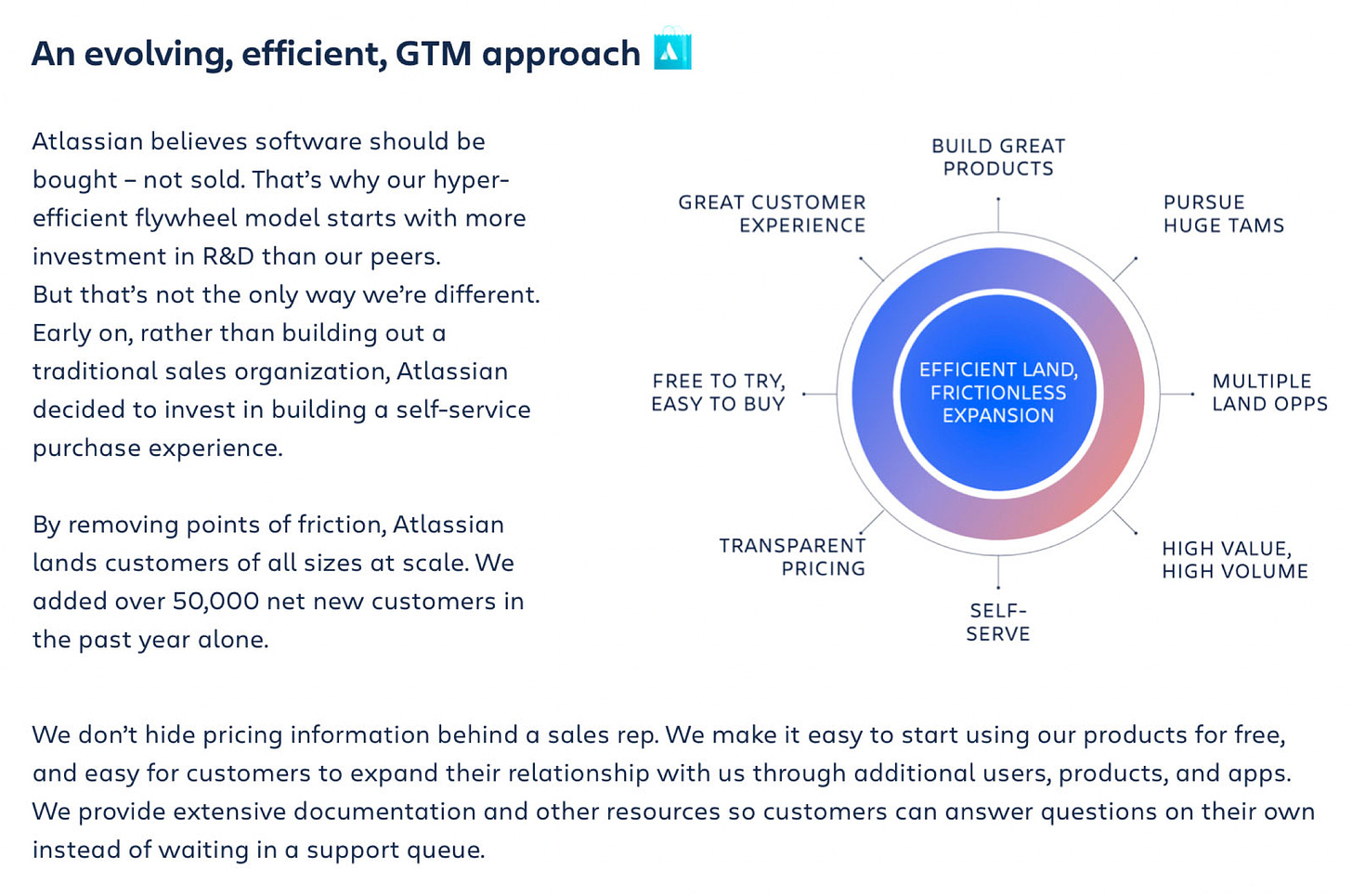What's 🔥 in Enterprise IT/VC #284
Bitcoin ⚡️ Miami - traditional finance everywhere...and IT Spend 📈
Wow, what an intense few days down here in Miami 🌴 for Bitcoin week.
While the headline is all about Bitcoin, the folks in attendance were here for lots more. All I can say is that at many a private event, I bumped into loads of TradFi folks from banks, wealth management and beyond holding digital assets and investing in crypto companies. Besides holding Bitcoin and Ethereum, many are starting to stake and explore other yield farming opportunities for their private wealth clients who all want exposure to this “asset class.” This is is just the beginning.
On the investment side, the early TradFi folks are investing in pure infrastructure, custodian platforms, staking infrastructure, security and analytics and include folks like Citibank, Goldman Sachs, JP Morgan, and many others. From my perspective this is still going to take a lot of time for TradFi to get their act together since many have to jump through extra regulatory hurdles to make these investments. If you’re an infrastructure investor, I’d continue to invest in areas that support crypto native companies first vs. focusing on what TradFi wants. Those folks are early in the market maturity adoption curve and it will take a number of years to catch up
To my point, here’s Mr. Bitcoin is Worthless aka Jamie Dimon changing his tune in his annual letter to shareholders:
Decentralized finance and blockchain are real, new technologies that can be deployed in both public and private fashion, permissioned or not. JPMorgan Chase is at the forefront of this innovation. We use a blockchain network called Liink to enable banks to share complex information, and we also use a blockchain to move tokenized U.S. dollar deposits with JPM Coin. We believe there are many uses where a blockchain can replace or improve contracts, data ownership and other enhancements; for some purposes, however, it is currently too expensive or too slow to be deployed.
The 🌊 of 💰 from TradFi is going to pour in over the next five years, and it’s going to be an exciting time for sure!
Speaking of the JP Morgan Chase Annual Letter, Jamie usually provides a deep overview of JPM’s IT priorities, and this year he does not disappoint.
To all of those enterprise infra founders, JPM is still only 40% of the way there in terms of migrating apps to the cloud and while much of this spending does go the public cloud providers, these “infrastructure” costs include things like modernizing developer tools and embedding operational resiliency and cybersecurity controls. So much more room to 🏃🏼♂️!
First, on the path to new and modern infrastructure, cloud-based systems, whether private or public, will ultimately be faster, cheaper, more flexible and also AI-enabled — all extremely valuable features. A few other additional details:
We have spent $2.2 billion building new, cloud-based data centers. Our total expensed cost of data centers is higher than in previous years — mostly because of the duplicative expense that is generated as we run both the new and older centers.
Thousands of applications (and their related databases) are being replatformed and refactored to run in the private and public cloud environment. To give you an example: We migrated our Card mainframe to the new data center and are already seeing approximately 20% faster response times for our major customer-facing applications. This one application will use only 1.5% of the capacity of our new data centers: Of our more than 5,000 applications that will still be in use in two years, 40% will have been replatformed.
These “infrastructure” costs include things like modernizing developer tools and embedding operational resiliency and cybersecurity controls.
Second, much of our “incremental investment” technology spend involves building software for new products and services. There are hundreds of these, large and small. Again, a few examples will describe the process:
In certain product areas, we made large, multi-year investments to improve a specific business. In Payments, we have been investing consistently over the past five years to modernize our businesses and compete with both banks and fintech companies. Since 2016, we have invested more than $1.5 billion in technology, operations, sales, products and controls and generated an incremental $4 billion in organic revenue annually, taking our overall market share in Treasury Services from 4.5% in 2016 to 7.2% in 2021. In 2021, we continued this strong momentum, initiating a large majority of all real-time payments in the United States in our cloud-native, faster payments platform, which is now live in 45 countries. We are also winning more than 80% of all global bids that include virtual account solutions available on our liquidity platform.
We now process payments for eight of the top 10 global Big Tech companies (up from three out of 10 companies five years ago), consistently winning business from strong competitors. We continue to bring to the market and commercialize innovative products, such as embedded banking; AI-driven fraud controls and forecasting; and account validation and programmable payments on JPM Coin. Decentralized finance and blockchain are real, new technologies that can be deployed in both public and private fashion, permissioned or not. JPMorgan Chase is at the forefront of this innovation. We use a blockchain network called Liink to enable banks to share complex information, and we also use a blockchain to move tokenized U.S. dollar deposits with JPM Coin. We believe there are many uses where a blockchain can replace or improve contracts, data ownership and other enhancements; for some purposes, however, it is currently too expensive or too slow to be deployed.
We expect to achieve double-digit market share over time in Payments, being the world’s most innovative bank, as well as the safest and most resilient.We built the capability for our Self-Directed Investing, which now has 800,000 new investment accounts totaling nearly $60 billion on the platform. We are excited to enhance and roll out this product to all of our customers, as we think it is a critical offering in today’s new competitive environment.
Increasingly, we are investing more money (think hundreds of millions of dollars) each year on AI for very specific purposes. For example, we use AI to generate insights on existing and prospective clients from public information, such as KYC protocols, regulatory filings, social media, news, public websites and documents. Once standardized, the information is then applied to multiple uses, such as generating leads, identifying companies and investors, onboarding clients, and detecting environmental, social and governance (ESG) themes. In all of these cases, there are identifiable returns due to lower prospecting costs or improved services. One specific example will suffice:
In the consumer world, we spent about $100 million since 2017 on AI, machine learning and other technology initiatives to improve fraud risk systems. We know this investment is working. Our annual fraud losses have come down 14% since 2017 despite volumes being up almost 50%, and we estimate that our technology investments alone contributed about $100 million in annual savings.
We have developed over 1,000 application programming interfaces that give various types of customers access to our systems in a controlled way, allowing them to automate our banking systems into their enterprise systems.
There are plenty of forward-looking and exciting R&D investments, too. For example, we are working on several research-based projects that have the potential for significant future impact. These involve multi-agent simulation, synthetic data and encryption methods — elements that have the capacity to unlock new ways of trading, managing risk and assessing productivity. Multi-agent simulations, for example, enable the exploration of strategies that can handle challenging regimes as variations of novel historical data. Synthetic data, well-calibrated by real data, enables effective testing, experimentation and development without triggering privacy and regulatory restrictions associated with using real data. Encryption methods give us better tools to protect our clients’ privacy and also equip us with the necessary techniques to handle the metaverse. This category also includes investment in the critical area of quantum computing.
As always, 🙏🏼 for reading and please share with your friends and colleagues.
Scaling Startups
Think big but don’t forget this
Enterprise Tech
Atlassian investor day - must read for where they started and how they’re trying to get to $10B ARR - here’s a great slide on their PLG motion…a classic
Gartner has updated is IT Spending Forecast. While the stock market has been hammered as of late, the outlook for software spending continues to shine - in the long run, we’ll all be more than ok. Double digit growth on billions of dollars of spend equals lots of opportunity.
I can’t tell you how many conversations over the years we’ve had about Gartner Magic Quadrants and placement and how to make sure you’re in the right spot at the right time. Here’s a great read from The Information “Tech’s Tussle over Gartner’s Magic Quadrant”
Here’s a post I wrote in 2010 on the Necessary Evil of the Magic Quadrant and how startups should play within the system - much of it still rings true today.
OSS for the win! Grafana raised $240M led by GIC, Singapore’s sovereign wealth fund, 7 months after its Series C.
“Worldwide adoption of Grafana has increased 25x in the past 6 years, and today there are more than 900,000 active installations and 10 million global users.”
💯 still a massive problem that needs to get fixed
Collaboration as an API is real (full disclosure: a boldstart investment)
 We just passed the 1M connections mark, and we only started counting less than 6 months ago. 🎉 Humbled to help thousands of developers build world-class collaborative experiences for people. Big big thank you to all of you, and cheers to the future! 🥂Today, we just passed the 1M connections mark! 🎉 To know we are helping all of these people collaborate digitally as if they were together in the same room is beyond inspiring. Thank you! https://t.co/wqXc8faAMl
We just passed the 1M connections mark, and we only started counting less than 6 months ago. 🎉 Humbled to help thousands of developers build world-class collaborative experiences for people. Big big thank you to all of you, and cheers to the future! 🥂Today, we just passed the 1M connections mark! 🎉 To know we are helping all of these people collaborate digitally as if they were together in the same room is beyond inspiring. Thank you! https://t.co/wqXc8faAMl Liveblocks @liveblocks
Liveblocks @liveblocksStripe Annual Report 🤯 - “500 million API requests every day with 99.999% uptime”
This needs to get fixed…
🤣
Markets
Crowdstrike keeps delivering












